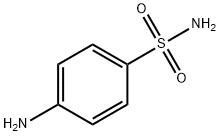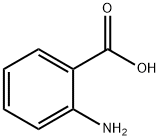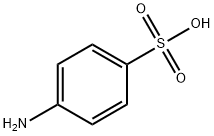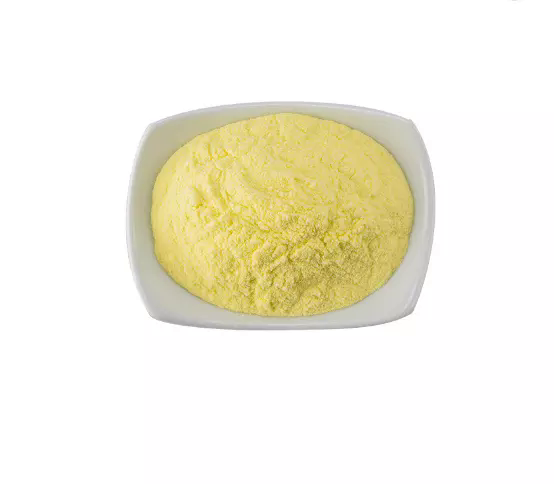2-Aminobenzaldehyde
Synonym(s):2-Formylaniline;Anthranilaldehyde;o-Aminobenzaldehyde
- CAS NO.:529-23-7
- Empirical Formula: C7H7NO
- Molecular Weight: 121.14
- MDL number: MFCD00007709
- EINECS: 208-454-3
- SAFETY DATA SHEET (SDS)
- Update Date: 2023-10-20 13:11:28

What is 2-Aminobenzaldehyde?
Chemical properties
light yellow crystalline powder
The Uses of 2-Aminobenzaldehyde
Reactant for:
- Preparation of quinoline derivatives as antiviral agents
- Preparation of electroluminescent materials for OLEDs
- Friedlander-type synthesis
- Preparation of 2-tosylaminophenyl cyclopropylmethanols for gold-catalyzed cyclopropyl carbinol rearrangement
- Benzyl C-H bond amination of arylmethylamines catalyzed by hydroxy-TEMPO
- Silver-catalyzed aniline mediated cascade hydroamination/cycloaddition reactions
Purification Methods
Distil it in steam and recrystallise it from H2O or EtOH/ Et2O. The semicarbazone has m 247o. [Beilstein 14 H 21, 14 I 356, 14 II 14, 14 III 47, 14 IV 42.]
Properties of 2-Aminobenzaldehyde
| Melting point: | 38°C |
| Boiling point: | 225.84°C (rough estimate) |
| Density | 1.1344 (rough estimate) |
| refractive index | 1.5323 (estimate) |
| Flash point: | 113 °C |
| storage temp. | -20°C |
| form | Low Melting Solid |
| pka | -0.01±0.10(Predicted) |
| color | White to yellow |
| Stability: | Unstable: reported to polymerize rapidly at room temperature. Incompatible with strong oxidizing agents, strong bases. Store at -20 C. |
| CAS DataBase Reference | 529-23-7(CAS DataBase Reference) |
| NIST Chemistry Reference | 2-Aminobenzaldehyde(529-23-7) |
| EPA Substance Registry System | Benzaldehyde, 2-amino- (529-23-7) |
Safety information for 2-Aminobenzaldehyde
| Signal word | Warning |
| Pictogram(s) |
 Exclamation Mark Irritant GHS07 |
| GHS Hazard Statements |
H315:Skin corrosion/irritation H319:Serious eye damage/eye irritation H335:Specific target organ toxicity, single exposure;Respiratory tract irritation |
| Precautionary Statement Codes |
P261:Avoid breathing dust/fume/gas/mist/vapours/spray. P264:Wash hands thoroughly after handling. P264:Wash skin thouroughly after handling. P271:Use only outdoors or in a well-ventilated area. P280:Wear protective gloves/protective clothing/eye protection/face protection. P302+P352:IF ON SKIN: wash with plenty of soap and water. P305+P351+P338:IF IN EYES: Rinse cautiously with water for several minutes. Remove contact lenses, if present and easy to do. Continuerinsing. |
Computed Descriptors for 2-Aminobenzaldehyde
New Products
4-AMINO-TETRAHYDRO-PYRAN-4-CARBOXYLIC ACID HCL 4-(Dimethylamino)tetrahydro-2H-pyran-4-carbonitrile 4-Aminotetrahydropyran-4-carbonitrile Hydrochloride (R)-3-Aminobutanenitrile Hydrochloride 3-((Dimethylamino)methyl)-5-methylhexan-2-one oxalate 1,4-Dioxa-8-azaspiro[4.5]decane 5-Bromo-2-nitropyridine Nimesulide BP Aceclofenac IP/BP/EP Diclofenac Sodium IP/BP/EP/USP Mefenamic Acid IP/BP/EP/USP Ornidazole IP Diclofenac Potassium THOMAIND PAPER PH 2.0 TO 4.5 1 BOX BUFFER CAPSULE PH 9.2 - 10 CAP SODIUM CHLORIDE 0.1N CVS ALLOXAN MONOHYDRATE 98% PLATINUM 0.5% ON 3 MM ALUMINA PELLETS (TYPE 73) LITHIUM AAS SOLUTION 2-Bromo-1-(bromomethyl)-3-chloro-5-nitrobenzene 2-Bromo-3-nitroaniline N-(3-Hydroxypropyl)-N-methylacetamide 3-Bromo-6-chloropyridazine 4-ethyl-3-nitrobenzoic acidRelated products of tetrahydrofuran








You may like
-
 529-23-7 2-Aminobenzaldehyde 98%View Details
529-23-7 2-Aminobenzaldehyde 98%View Details
529-23-7 -
 2-Aminobenzaldehyde, ≥98% CAS 529-23-7View Details
2-Aminobenzaldehyde, ≥98% CAS 529-23-7View Details
529-23-7 -
 2-Aminobenzaldehyde CAS 529-23-7View Details
2-Aminobenzaldehyde CAS 529-23-7View Details
529-23-7 -
 1823368-42-8 98%View Details
1823368-42-8 98%View Details
1823368-42-8 -
 2-(3-(tert-butyl)phenoxy)-2-methylpropanoic acid 1307449-08-6 98%View Details
2-(3-(tert-butyl)phenoxy)-2-methylpropanoic acid 1307449-08-6 98%View Details
1307449-08-6 -
 Ethyl 3-(furan-2-yl)-3-hydroxypropanoate 25408-95-1 98%View Details
Ethyl 3-(furan-2-yl)-3-hydroxypropanoate 25408-95-1 98%View Details
25408-95-1 -
 2-Chloro-5-fluoro-1-methoxy-3-methylbenzene 98%View Details
2-Chloro-5-fluoro-1-methoxy-3-methylbenzene 98%View Details
1805639-70-6 -
 Lithium ClavulanateView Details
Lithium ClavulanateView Details
61177-44-4
Statement: All products displayed on this website are only used for non medical purposes such as industrial applications or scientific research, and cannot be used for clinical diagnosis or treatment of humans or animals. They are not medicinal or edible.